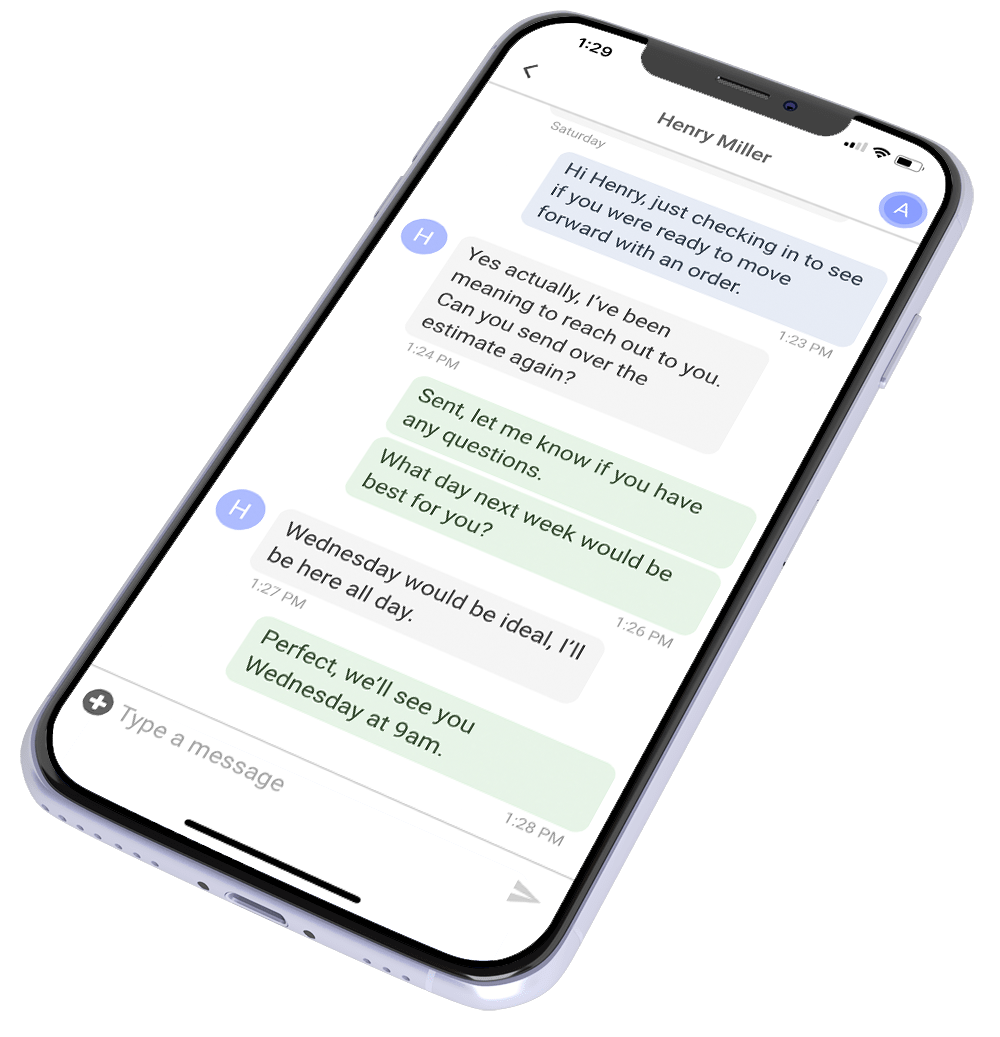April 19th was the day Americans fired the first shot for freedom.
April 19th marks the 250th anniversary of the Shot Heard Round the World—the spark that lit the American Revolution and, eventually, gave birth to the United States. It happened early in the morning at Lexington, Massachusetts, when colonial militia stood their ground against British troops. Nobody knows who fired that first shot. But when the smoke cleared, everything had changed. That moment flipped history on its head.
But here’s the wild part—April 19th barely gets any love. We celebrate July 4th like crazy. Fireworks, cookouts, parades. But without April 19th, there is no July 4th. No Declaration of Independence. No America. So here at ProLine, because we love this country (and because we’re a little obsessed with freedom—including our free CRM, lol), we decided it’s time to give April 19th the respect it deserves.
That’s what this article is all about. A full retelling of the story behind the Shot Heard ’Round the World. Why it matters. What happened that day. And why we believe April 19th might be the most important day in American history.
Oh—and before we dive in, a quick heads-up: If you sign up for ProLine and use the code AMERICA1775 at checkout, you’ll get 50% off your first month. Talk about patriotic.
Also, if you want to follow along visually, here’s a great video to check out from History Rebels!

The Context
The American colonies were weird. Not in a bad way—just different. Most of them were started by English people who crossed the ocean looking for something better. In New England especially, folks came in search of religious freedom and a shot at building a more just society. They didn’t just want land—they came with strong ideas about self-rule, moral purpose, and what it meant to build a fair society.
The colonies had a long tradition of self-government. Local assemblies, town meetings, elected councils. The king stayed mostly out of it. Britain collected tariffs on goods going back home, but otherwise left the colonies alone. Parliament barely lifted a finger, even during big events back in England like the Glorious Revolution or the English Civil War. The colonies, for the most part, ran their own show.
Sure, not everyone in the colonies was English. You had Germans, Scots-Irish, and the French. But almost all of them shared one thing: a deep respect for local control. Places like Virginia had strong colonial governments. New England towns ran with direct democracy. This culture of independence ran deep. Then the French and Indian War came along and everything started to shift.
The French and Indian War kicked off when a young, green, and arguably clueless George Washington stumbled into a mess near present-day Pittsburgh. The fight escalated. Soon, Britain and France were locked in a global war with fighting in Europe, North America, the Caribbean, even India. Britain eventually won big, grabbing territory including modern-day Canada. But the war came with a price tag the size of the Atlantic Ocean.
For the British government, the message was simple: these American colonists better start pulling their weight.
The Boiling Point
Americans were used to running their own show. The idea of getting taxed by a government thousands of miles away, with zero say in the matter, felt like a slap in the face. These folks had built local governments, elected local leaders, paid local taxes. Now suddenly, Parliament shows up and says, “We need money. Fork it over.”
The Crown imposed new taxes, small ones but widely hated: the Stamp Act and the Townshend Acts. The colonists saw them not as taxes but as warnings: “You don’t own yourselves anymore.”
Some colonists looked at British rule in Ireland and India and saw a warning. Colonial rule meant losing your rights, your voice, and your dignity. The colonies weren’t interested in becoming another outpost of the empire. New England, especially. These people had fire in their veins. They believed in their liberty the way others believe in gravity. You mess with that, and you’d better be ready for a fight.
Things got ugly fast. British troops began occupying Boston. Parliament stripped Massachusetts of its right to self-govern. Protests broke out. Riots followed. Then came the Boston Massacre. Then the Boston Tea Party. Tensions flared across every colony that had a tradition of self-rule. It got so heated that parliament passed the Intolerable Acts, which ended Massachusetts’ right to rule itself.
In response, the colonists formed their own government, one that openly defied the Crown. Then they started stockpiling weapons, hiding them in towns like Concord. Boston, meanwhile, filled with British troops—about 3,000 of them under General Thomas Gage. Gage thought he had it under control. March in, show force, shut things down. Easy.
He quickly realized how wrong he was.
Boston was surrounded. The militia system meant most able-bodied men owned guns and trained regularly. These weren’t professional soldiers, sure—but they knew the land. They knew the people. And they wanted the British gone. Every time Gage tried to move outside the city, he got swarmed by angry, well-armed locals. It didn’t take long before he started begging London for more troops.
So instead of launching an all-out war, Gage tried something smaller. A mission. A raid. One move to shut it all down before it spiraled out of control.
Spoiler: it spiraled.
The Plan
General Gage finally decided it was time to act. He was tired of playing defense. So he hatched a plan to hit the Patriots where it hurt: their weapon stashes. All over the countryside, the colonists had been stockpiling gunpowder, shot, cannons, everything they’d need for a fight. Gage sent troops to seize some of these caches. He succeeded here and there, but it was a losing game. The colonists had spies everywhere. They moved their supplies before he even got close.
So in April 1775, Gage rolled the dice. He planned a large, coordinated raid on Concord, a town northwest of Boston rumored to hold a major weapons cache. This time, he kept it top secret. Only a few officers knew. He scheduled the march for the middle of the night—no fanfare, no noise. The goal was to surprise the rebels before dawn.
But here was the twist. The patriots had built a deep spy network in Boston. There were moments when Patriots seemed to know Gage’s orders before Gage himself did. Heck, even Gage’s wife, Margaret, had been born in New Jersey. She had strong ties to the colonial cause and close friendships with Patriot leaders. Some historians even believe she was the leak, the one who tipped them off. Whoever it was, when he received instructions to arrest rebel leaders like Sam Adams and John Hancock, those same leaders were already long gone.
So when Gage gave the order to march on Concord, the Patriots already knew. They knew the target. They knew the date: April 19th. The only thing they didn’t know was the route. Would the British go by land or cross the Charles River to reach the mainland?
That was where the lanterns came in. At the Old North Church in Boston, two lanterns shone out from the steeple—”One if by land, two if by sea.” The message was clear: the British were coming by sea. The warning spread like wildfire. Riders mounted up and flew through the countryside.
You’ve heard of Paul Revere, but he wasn’t alone. William Dawes rode too, along with other messengers. These men covered miles in hours, waking every town, every village militia. So when the British troops stepped off their boats around midnight and began marching toward Lexington and Concord, they had already lost the element of surprise. The countryside was already wide awake.
After marching all night, the British troops—about 700 strong—reached the small town of Lexington just as the sun began to rise. It was around 5:00 in the morning on April 19th. But they weren’t catching anyone off guard. The entire countryside had already been warned. And waiting for them on the town green were about 80 colonial militiamen, standing in formation.
These local men had received strict orders: don’t start a fight. They weren’t there to start a revolution.. Their plan was simple. If the British told them to leave, they would leave. But if they were attacked, they would defend themselves. As the two sides faced off, tensions rose. British officers shouted at the militia to disperse. The militiamen began to break ranks.
And then a shot rang out.
To this day, no one knows who fired it. Maybe it was a nervous soldier. Maybe it was an accident. Maybe someone in the woods got jumpy. But that single shot opened the floodgates. Gunfire erupted. Chaos took over. When the smoke cleared, eight Americans lay dead, and several more were wounded. A handful of British regulars were also injured. The colonists fled the field.
News of the clash spread like lightning. Riders carried word to nearby towns.
That mysterious shot? That was the one we now call the Shot Heard ’Round the World.
If that shot had never been fired—if someone had held their breath a second longer—who knows?
After the skirmish in Lexington, the British kept marching. Their real goal wasn’t Lexington—it was Concord, a small town just a few miles farther west. When they arrived, they found that most of the weapons and supplies had already vanished. The Patriots had known they were coming. Still, the Redcoats managed to grab a few leftover items, including some cannons, but there was no major haul. Things stayed quiet for a moment. In fact, some British troops reportedly interacted with locals, even buying food.
But not everything remained calm. The British sent a detachment—about 120 men—to guard a bridge just northwest of town. On the other side, hundreds of militia had gathered. And it wasn’t a small crowd. Around 400 local militiamen stood across the river from those 120 Redcoats. The number of militia had grown steadily all morning. Then they saw smoke rising from the town. What they didn’t realize was that the British were actually helping put out small fires—not burning Concord. But the sight of the smoke set them off. They believed their homes were under attack.
So the militia began marching down the hill. As they moved toward the bridge, the British opened fire. Several Americans fell. The militia returned fire. This wasn’t a warning shot or a quick skirmish—it was a full-on battle. The British held the bridge briefly, but they were outnumbered. The Americans were angry, well-armed, and closing in. The British finally decided it was time to leave.
They had left Boston around 2:00 a.m. It was now the middle of the day. These soldiers had been marching for hours, fighting in full gear, and they were exhausted. As they retreated back toward Boston, militia units from across Massachusetts poured in. They set up along the roads, behind stone walls and fences, in barns and woods. The British weren’t marching anymore—they were running.
The Bloody Retreat
As the British marched back toward Boston, the real battle began. Militiamen swarmed the roads, hiding behind stone walls, fences, and barns. They fired from behind trees and hills. One by one, they picked off British soldiers. These weren’t the open-field battles the British were used to. This was hit-and-run, duck-and-cover, shoot-and-vanish warfare. And it was devastating.
To fight back, the British sent out flanking parties. These small squads swept the woods beside the road, trying to flush out the ambushers. Sometimes it worked. They pushed off the closest threats. But it didn’t stop the bleeding. Every step back toward Boston became a gauntlet. The retreat turned into a slow, brutal crawl. When the troops reached Lexington, they were desperate. Reinforcements arrived—sent by General Gage, who had a gut feeling things might go south.
But reinforcements didn’t fix everything. The march continued, and so did the harassment. Every bend in the road brought another militia unit. Another volley of musket fire. Another dead or wounded Redcoat. British commanders grew furious. They wanted the Patriots to stand and fight like proper soldiers—but the colonists refused to play by those rules. By the time the British reached the town of Menotomy, they had had enough. Small gunfights broke out. Some soldiers snapped and killed civilians. The retreat became a massacre on both sides.
By the time the British finally returned to Boston, it was too late. This wasn’t a protest anymore. It wasn’t politics. This was war. As soon as the Redcoats entered the city, Patriot militias from across New England arrived and laid siege to Boston. They surrounded it on all sides, cutting off land access. Sure, the British still had the Royal Navy. But inside the city, tension boiled over. Supplies ran thin. The British knew they were stuck.
As Samuel Adams reportedly said when he heard the distant sound of gunfire:
“What a glorious morning is this!”
Nothing would ever be the same again.
So, yeah—the Fourth of July gets the fireworks. But April 19th lit the fuse. Without that morning, there’s no Declaration, no Independence, no America. The men who stood their ground on Lexington Green and marched down the hill into Concord didn’t know what the future held. But they knew what they stood for. And they didn’t flinch.
That’s why we celebrate it. That’s why we remember.
And here at ProLine, we’ll raise a glass to that courage.




